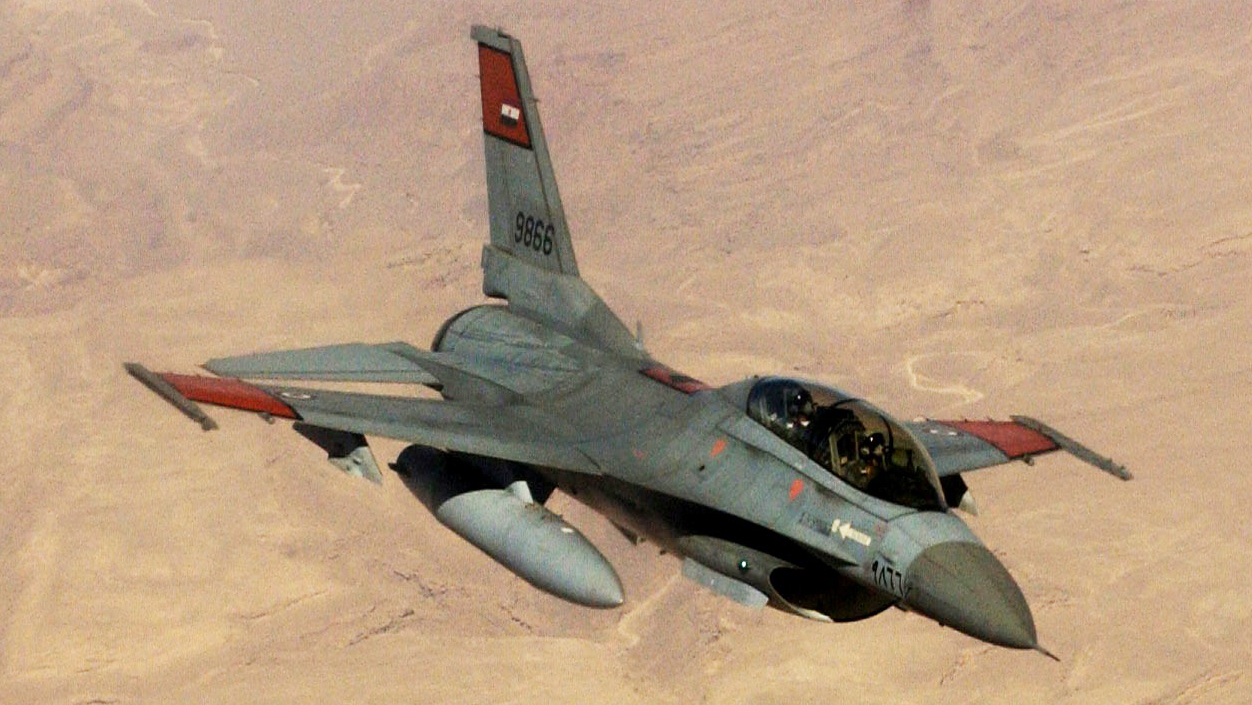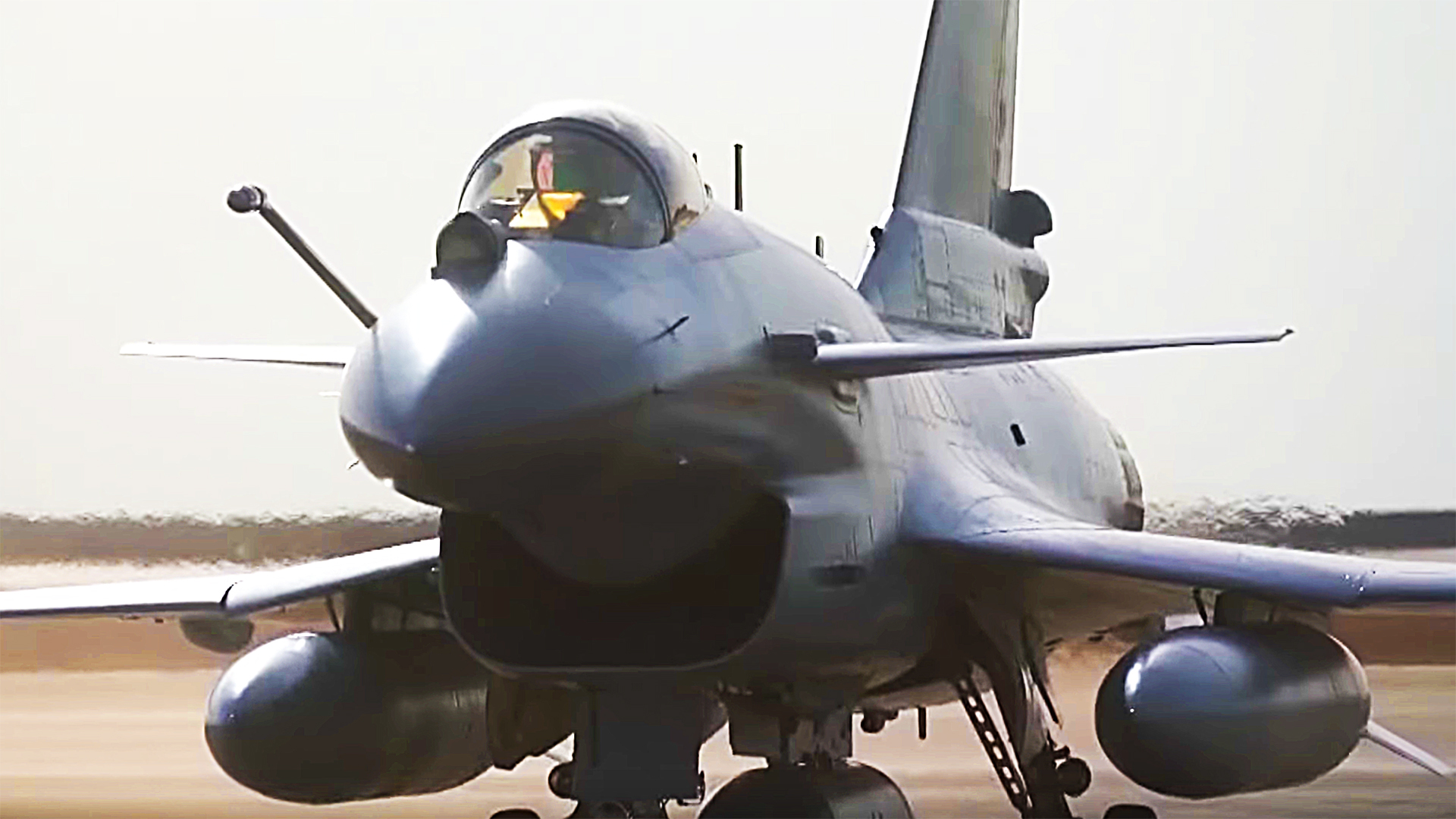In another sign of China’s growing interest in the Middle East and Africa, the People’s Liberation Army Air Force (PLAAF) has sent multiple combat aircraft to Wadi Abu Rish Air Base for “Eagles of Civilization 2025,” its first aerial training exercise with Egypt. The PLAAF deployed a Y-20U aerial refueling tanker, a KJ-500 AWACS aircraft, and J-10B/C fighters from the 18th Air Brigade and the 177th Air Brigade, according to the China 3 Army Telegram channel. Egypt is flying its MiG-29M/M2 Fulcrum multirole fighters in the drills. All this is taking place against the backdrop of conflicting claims about Cairo purchasing J-10Cs and America’s gaze turning away from Africa.
The exercise kicked off on Sunday and runs through the middle of May. It “aims to enhance the technical and tactical levels of the participating troops on both sides and is of great significance to promoting pragmatic cooperation and enhancing mutual trust and friendship between the two armies,” according to the official Chinese CCTV media outlet.

The exercise, being staged at a base about 60 miles west of the Gulf of Suez, will allow Egypt to work with one of China’s top airborne early warning and control platforms, its primary medium-weight multi-role fighter, and its relatively new refueler. Moving all these planes, support equipment and troops from China also demonstrates Beijing’s growing global air mobility capabilities.
“The air unit has adopted a mixed force formation that combines air transfer and aerial transportation, which ensured full deployment of all personnel and equipment by Tuesday after they completed a journey of nearly 6,000 kilometers (about 3,700 miles),” according to CCTV.
In addition, it has been suggested that China can use the exercise to train against relatively modern MiG-29s, a type that remains a primary fighter for the Indian Air Force and Navy.
On the larger geopolitical elements of this exercise, Eagles of Civilization 2025 gives China an inroad into a key U.S. Middle East ally at a time of increasing regional tensions and rising questions about U.S. reliability as a primary security partner.
Egypt, which received nearly $1.5 billion in U.S. military aid last year, is caught between wanting to continue that support and opposing calls by the Trump administration to deport residents of Gaza, where Israel and Hamas have been engaged in a brutal war since Oct. 7, 2023. Cairo has been a key player in trying to end that conflict, helping to negotiate a ceasefire that has since collapsed.
With the real possibility of drastic foreign aid cuts to beneficiaries like Egypt, Cairo could see Beijing as an alternative to Washington’s largesse and resulting attached strings. A former commander of U.S. Central Command gave us his thoughts on the situation.
“I don’t know that this exercise portends any significant direct risk for us – but it is a reminder that our partners (in this case Egypt) have choices as well,” retired Army Gen. Joseph Votel, now a Distinguished Military Fellow at the Middle East Institute, told us Monday morning. “Clearly, China is trying to grow influence with countries in the region, who also have well-established ties to the U.S., so that they are viewed more positively. This is linked to a desire to be seen as an alternative military equipment supplier to Egypt and other countries in the region. To this end, China will portray themselves as a more timely and effective supplier – and partner – than the United States.”

This fits in with a larger Chinese pattern of weaving its way into the lucrative Middle Eastern arms market. Chinese weapons sales to the Middle East jumped by 80% in the last decade, military strategist Peter Singer noted in a recent op-ed in Defense One.
China is possibly selling fighter aircraft to Iran, “paying via oil and natural gas exchange,” Singer explained, adding that Saudi Arabia is reportedly in talks to purchase drones and other equipment. Meanwhile, there are conflicting claims about a possible Egyptian purchase of China’s J-10C multirole fighters. These rumors have included erroneous reports of deliveries. In February, the Daily News Egypt reported that the first batch of J-10Cs arrived. Chinese Defense Ministry spokesperson Wu Qian quickly denied that. Still, talk of a possible deal for the jets continues.

Egypt operates one of the world’s largest fleets of U.S.-made F-16 Vipers, but they have been seeking alternatives, even if just for leverage to receive additional and more advanced hardware from the United States. Regardless, Egypt has always flown mixed fighter fleets. Hence the advanced MiG-29s. There was also the saga with the sale of advanced Russian Flankers to Egypt that never went through.
Still, Egypt could have interest in other aircraft, including China’s increasingly diverse and capable airborne early warning aircraft, one of which is also in-country for the exercise. The Y-20 tanker-transport could also be of interest.

China’s arms dealing is more than just about gaining an economic benefit.
“Arms exports are given to one side in a conflict not only to provide diplomatic support but also to clarify the exporting country’s sense of presence and influence the conflict resolution process,” Han Jie, a representative from the Chinese weapons manufacturer China North Industries Group Corporation, posited.
China is reportedly inserting itself into the ongoing U.S. fight with the Houthis. For more than a month, the U.S. has been bombing Iranian-backed Houthi rebel targets in Yemen. U.S. intelligence officials have accused Beijing of providing the Iranian-backed Houthi rebels of Yemen “with imagery to target U.S. warships and international vessels in the Red Sea,” Financial Times reported last week.
China, as we have previously noted, already maintains a major presence in the area, with a large and complex base in the East African nation of Djibouti, on the Red Sea. This facility has given China a continuous presence in the Gulf of Aden since 2008.

China has a huge stake in this region. As a major importer of oil, the Strait of Hormuz is a notorious choke point and any conflict involving Iran always involves a threat that Tehran will close off the Strait. That’s of acute concern because U.S. President Donald Trump has given Tehran until the middle of next month to agree to a deal on its nuclear program or face a possible kinetic response.
But even more pressing is the bigger picture on the African continent, where China’s arms sales, and especially its economic influence, are growing at an accelerating rate.
This is taking place as the White House is pulling back from Africa in a number of ways, including militarily. The Trump administration is now considering making U.S. Africa Command a subordinate of U.S. European Command, as one clear sign of its pivot away from the continent. China is seeking to fill any vacuum left by Washington, and any increase in influence in Egypt, which possesses Africa’s most powerful military, could go a long way toward that objective.
Contact the author: howard@thewarzone.com
